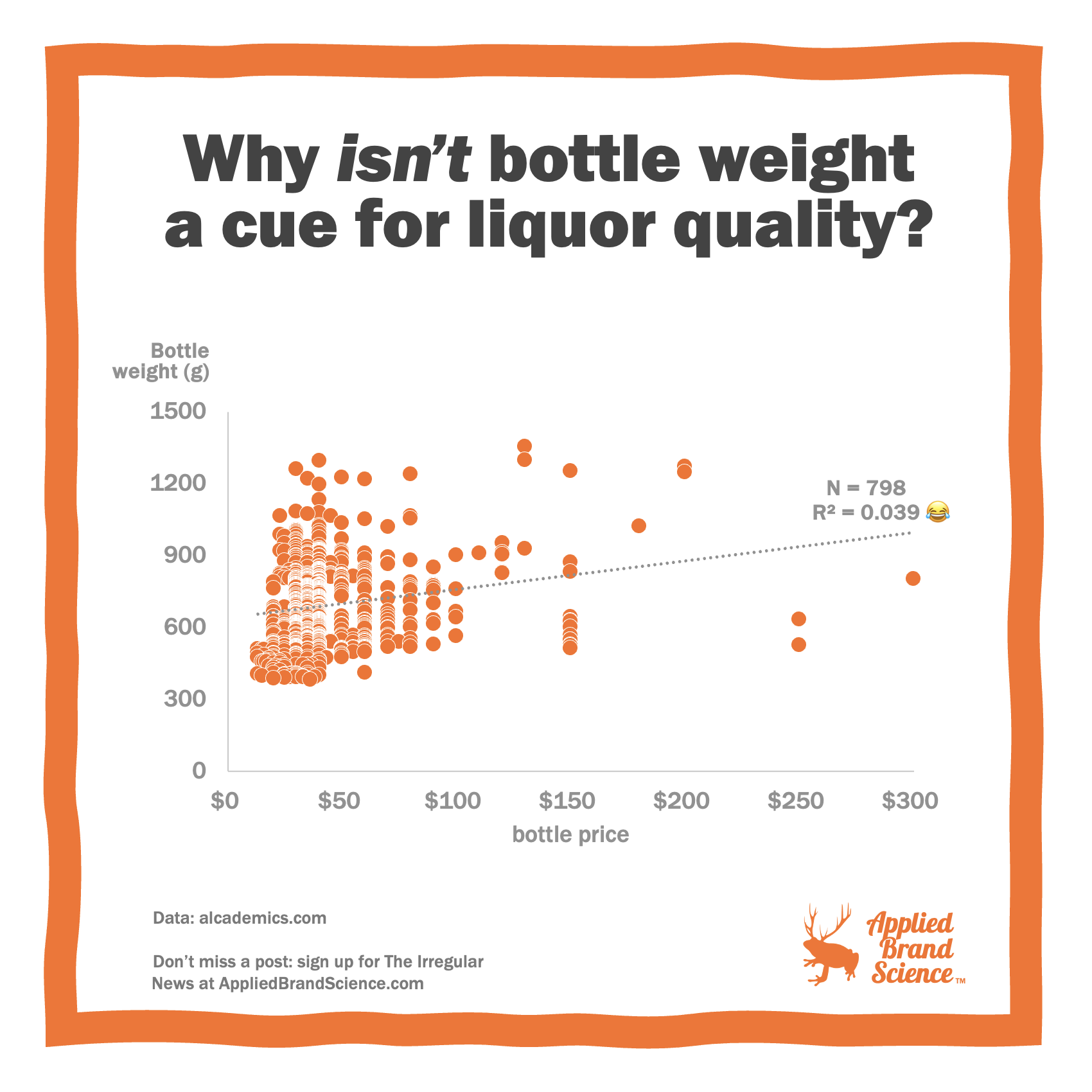Are expensive spirits sold in heavier bottles?
Shouldn’t nicer spirits be sold in thick-walled, faceted, hefty bottles?
Camper English (The Alcademic) has been recording the price & weight of liquor bottles for almost 15 years. He’s got nearly 800 bottles in his database.
Prices ranged from Sobieski vodka at $14.99 to Hennessey XO at $300.
Weights ranged from Jim Beam rye at 391g to Camus Cognac XO at a beefy 1,355g.
Turns out there’s less than a 20% correlation between price & weight. (The Rsq of the linear regression is a measly 0.039. 😂)
F’rinstance, Balblair’s 1991 Highland single malt Scotch ($249.99+) and Skyy vodka ($19 or less) both weigh about 528g.
And D’usse XO Cognac ($199) and Double Cross vodka ($29) both weigh in at about 1,265g.
I know there are many factors that go into bottle design in spirits.
But as a marketer and brand scientist (and the proprietor of a speakeasy), it baffles me that bottle weight isn’t used more often as a symbol of quality for the liquid inside.
Granted, the very fanciest spirits like the $1,000+ stuff in airport duty-free shops often come in (or with) hefty crystal decanters.
But even among the $70+ set that Camper weighed, there's only a 9.3% correlation between price & weight.
🍊 🍊 🍊
Shoppers use explicit, tangible cues to assess the quality of stuff all the time.
And brands often figure this out and then use those cues to express quality.
Of course, price itself is one of the ultimate cues: Balbair 1991 must oooobbbviously be good: it’s $250 a bottle.
But bottle weight seems like a good physical, tangible, visceral, (and often subconscious) symbol of quality that spirit-makers should use more.


